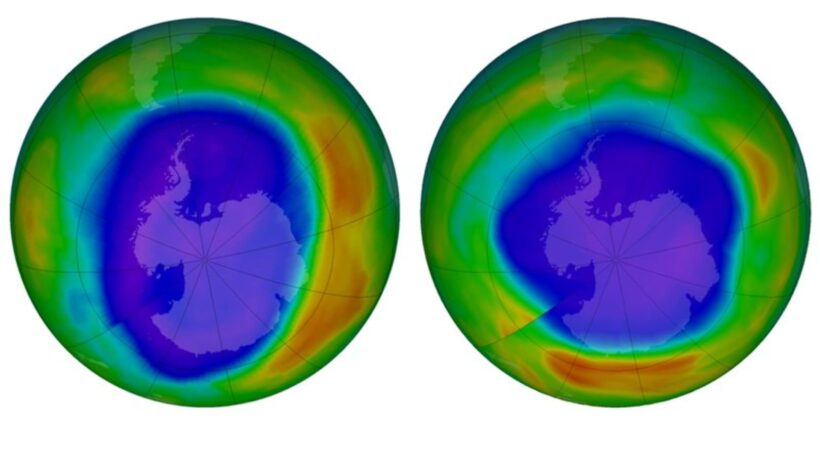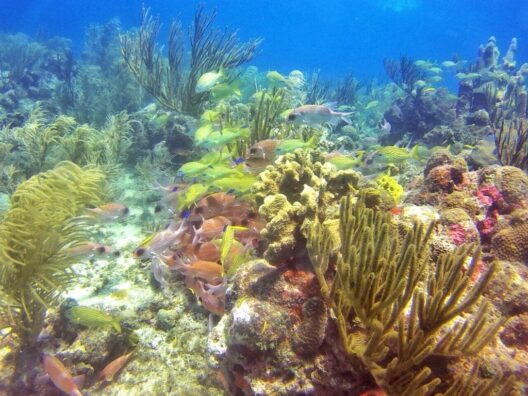The Earth’s ozone layer, a stratospheric shield composed primarily of ozone (O3), has long been celebrated for its role in filtering out harmful ultraviolet (UV) radiation. However, recent developments in our understanding of atmospheric sciences have shed light on a fascinating possibility: can the ozone layer truly help cool the planet? This question invites an exploration into the complex dynamics of atmospheric chemistry, climate change, and the intricate balance of ecosystems.
Historically, the depletion of the ozone layer due to anthropogenic activities—specifically, the release of chlorofluorocarbons (CFCs), halons, and other ozone-depleting substances—has raised alarms among scientists and environmentalists alike. The 1987 Montreal Protocol, hailed as one of the most successful international environmental agreements, led to a significant reduction in the production and consumption of these harmful gases. As a result, the ozone layer is on a path to recovery, and scientists posit that it may return to its pre-1980 levels by the mid-21st century. But what does this healing imply for global temperatures and climate change?
To understand the potential cooling effect of the ozone layer, it is essential to consider how ozone interacts with both UV radiation and greenhouse gases. Ozone is a potent greenhouse gas itself, but its effects are not solely detrimental. In the stratosphere, it absorbs much of the sun’s harmful UV radiation, thus protecting living organisms from its deleterious effects. However, the complexities arise when ozone transitions into the lower atmosphere (troposphere), where it becomes a secondary pollutant, contributing to smog and respiratory problems.
Research indicates that as the ozone layer heals, there may be a significant alteration in the dynamics of climate systems. In global climate models, the recovery of the ozone layer could theoretically lead to a reduction in greenhouse gas-induced warming. This occurs because the ozone layer’s restoration can diminish surface UV radiation, thereby lowering temperatures, particularly in the Southern Hemisphere. The intricacies of this relationship are profound; a globally balanced increase in ozone concentration at stratospheric levels can, counterintuitively, have an adverse effect on tropospheric temperatures.
Harking back to the idea of interconnectedness, the relationship between ozone and carbon dioxide (CO2) exemplifies a fascinating intersection of atmospheric sciences. Elevated levels of CO2 are a primary driver of global warming. The healing ozone layer could mitigate some warming implications by altering the global wind patterns and, consequently, the distribution of heat across the planet. For instance, research shows that as the ozone layer recovers, it can cause a southward shift in the jet streams, which in turn influences storm tracks and precipitation patterns. Such shifts can have profound implications for weather extremes and global climatic consistency.
However, while the ozone layer’s recovery offers promising angles for climate moderation, it is paramount to maintain a holistic perspective focused on all greenhouse gases, not just ozone. The narrative surrounding ozone needs to be framed within the broader context of atmospheric dynamics. Addressing climate change isn’t merely about restoring the ozone layer; it is about a multifaceted approach that includes reducing carbon emissions, transitioning to renewable energy sources, and promoting sustainable agricultural practices.
There’s an insidious and paradoxical effect that must also be acknowledged: while revitalizing the ozone layer may provide certain cooling effects, it does not negate the pressing need to reduce greenhouse gas concentrations overall. Many researchers urge for a balanced approach, advocating that ozone recovery should be a complementary strategy within broader climate action efforts. The restoration of ozone might help with some climate challenges, but addressing carbon emissions remains crucial. It is a complex interplay of addressing both issues simultaneously for optimal effect.
Furthermore, these dynamics raise intriguing speculative scenarios regarding climate policy. Imagine if nations around the globe were to unite not just in reducing ozone depleters but also in committing proactively to bolster projects aimed at ozone visibility and monitoring, and clean air initiatives. Such strategies could create a synergistic relationship where the recovery of the ozone leads to new climate solutions, fostering innovation and creative environmental stewardship.
Moreover, the integration of this understanding into educational endeavors can serve as a powerful tool. By fostering a deep comprehension of the ozone layer’s significance and its role in mitigating climate change, awareness can cultivate action. Engaging future generations to think critically about atmospheric interactions and environmental implications can establish a proactive cohort of environmental stewards ready to embrace the challenges ahead.
In conclusion, pondering whether the ozone layer can indeed help cool the planet unveils a tapestry of questions that require consideration of atmospheric chemistry, climate dynamics, and international collaboration. As we inch closer to a world where the ozone layer has recovered, we find ourselves at a crossroads. Will we harness this restored layer as a pivotal element in our climate strategies? The potential exists, but it requires a concerted effort across disciplines and borders. To fully leverage the ozone layer’s benefits, enthusiasm must transform into action—merging science with policy and community engagement for tangible results. The promise of a cooler planet lies not only in a healed ozone layer but in our collective wakefulness to the intricacies of Earth’s climate dialogue.








